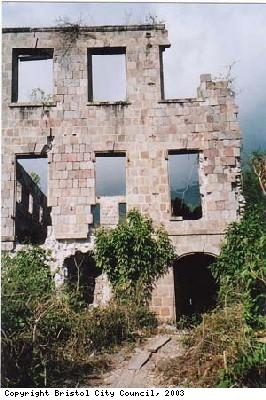John Pinney
Mountravers
Pinney left the Caribbean island of Nevis in 1783. His plantation, Mountravers, was run by managers, and the University of Bristol library holds the many letters sent between Pinney and the manager.
In 1808, after the slave trade was made illegal, Pinney decided to sell Mountravers. A Nevis neighbour, Edward Huggins, was interested. Pinney did not want to sell to him because Huggins was known to be cruel to his slaves. They hated him so much it was said they tried to kill him five times. However, when another buyer pulled out, Pinney did sell to Huggins. Mountravers was sold for £35,650 (about £1.75 million today). The 183 slaves were valued at £65 each (about £3,250 today).
The slaves rebelled against their new owner. He punished them by publicly flogging 32 of them. One woman, Fanny, died a few months later. Huggins was tried for cruelty. An eyewitness said that one man was given 365 lashes and a woman 291. Huggins was found not guilty. The case caused uproar and helped to change public opinion in Britain about slavery. In 1807 the British trade in slaves ended, but slaves were not freed. Soon after, a campaign began to free the slaves in British territories. In 1833 the Act of Emancipation (freedom) was passed. It is estimated that Bristol-based plantation owners received more than £500,000 (£40 million today) in compensation for the slaves that were freed. Full freedom for enslaved Africans was not granted until 1838 and none of them received any compensation.

 Links with Nevis
Links with Nevis Mountravers
Mountravers Pero
Pero Back to Bristol
Back to Bristol The abolition movement
The abolition movement Hard times
Hard times Treatment of slaves
Treatment of slaves Life as a plantation owner
Life as a plantation owner The young Pinney
The young Pinney Charles Pinney
Charles Pinney

